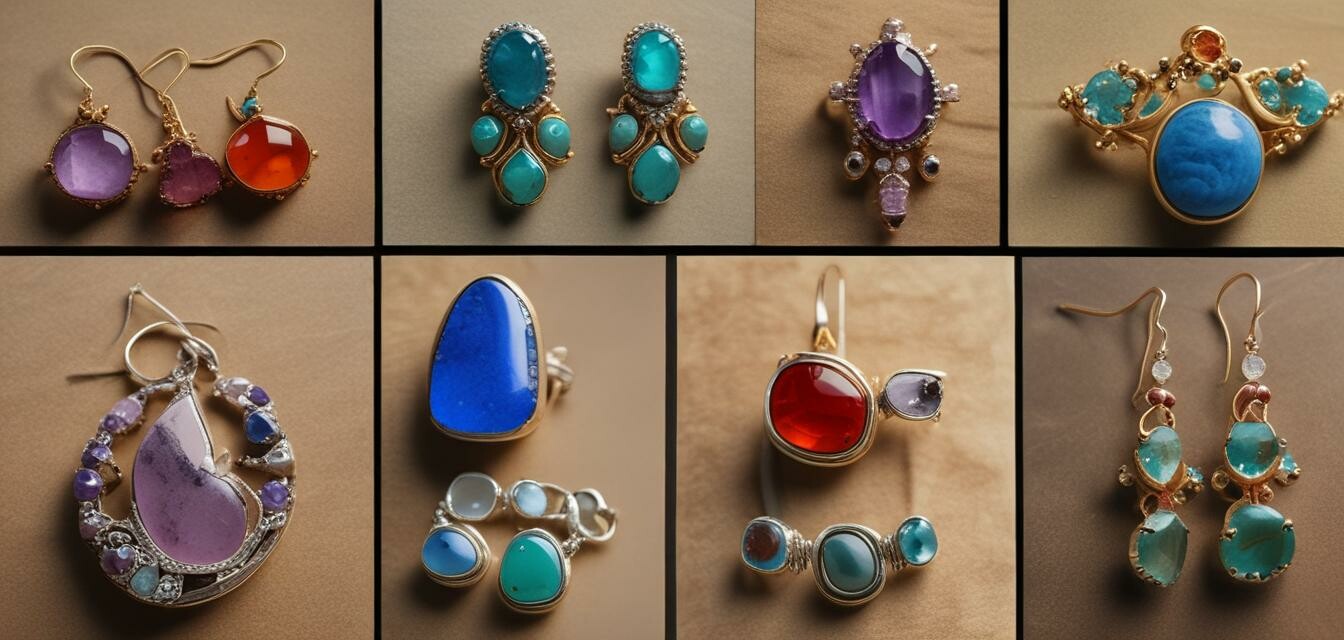
How Fair Trade Practices are Transforming Jewelry
Key Takeaways
- Fair trade practices enhance the livelihood of artisans.
- These practices promote sustainable sourcing of materials.
- Consumers are increasingly supporting ethical jewelry brands.
- Transparency in the supply chain is becoming a standard expectation.
- Fair trade certifications are essential indicators of ethical practices.
The jewelry industry is undergoing a remarkable transformation due to the adoption of fair trade practices. As more consumers demand ethically sourced and sustainable products, artisans and brands are stepping up to reshape how jewelry is produced and sold. This article explores the profound impact of fair trade on the jewelry market and how it helps foster a sustainable future.
Understanding Fair Trade in Jewelry
Fair trade refers to a social and economic movement aimed at ensuring fair payment and working conditions for artisans and workers. In the jewelry sector, this involves fair wages, safe working environments, and environmental sustainability. These practices are crucial for promoting long-term benefits for communities and the planet.
The principles of fair trade
- Fair wages: Artisans receive compensation that meets their basic needs.
- Community development: Profits are reinvested into local communities.
- Environmental responsibility: Practices that support ecological health and conservation.
- Transparency: Clear and honest communication between consumers and producers.
- Gender equity: Empowering women artisans and promoting equal opportunities.
Benefits of Fair Trade Jewelry
There are numerous benefits associated with fair trade practices, both for the artisans producing the jewelry and the consumers purchasing it. Here’s a closer look at how fair trade is making a difference:
| Benefit | Description |
|---|---|
| Empowerment of artisans | Fair trade ensures artisans can earn a sustainable livelihood while preserving their cultural identity. |
| Higher quality products | Artisans invest in their craft, resulting in superior craftsmanship and unique designs. |
| Environmental sustainability | Encourages the use of eco-friendly materials and methods, reducing carbon footprints. |
| Consumer awareness | Increases knowledge about ethical practices and responsible consumerism. |
| Support for local communities | Strengthens community bonds and promotes cultural appreciation. |
Impact of Fair Trade on Jewelry Production
Fair trade practices are reshaping the jewelry production landscape in several significant ways:
Sustainable sourcing
Fair trade emphasizes the importance of sourcing materials responsibly. This means obtaining gemstones and metals in ways that do not harm the environment or exploit workers.
Artisan collaborations
Many fair trade jewelry brands work directly with artisans, fostering collaborations that respect traditional techniques while providing fair compensation.
Transparency in supply chains
Consumers are now more interested in knowing where their jewelry comes from. Fair trade certifications provide clarity on sourcing, enabling consumers to make informed decisions.
Raising awareness
The movement has sparked conversations around ethical issues in the jewelry industry, encouraging both consumers and businesses to prioritize sustainability.
How to Identify Fair Trade Jewelry
Shopping for fair trade jewelry can be straightforward if you keep the following tips in mind:
Beginners Section: Tips for Finding Fair Trade Jewelry
- Look for certifications: Seek brands with recognized fair trade certifications.
- Ask questions: Inquire about the sourcing of materials and the conditions of workers.
- Research brands: Familiarize yourself with brands that are known for their ethical practices.
- Read reviews: Customer feedback can provide insight into a brand’s commitment to fair trade.
- Support local artisans: Consider buying from local artisan markets or online platforms.
The Consumer’s Role in Promoting Fair Trade
As consumers increasingly demand ethical options, their choices can significantly impact the jewelry industry. Here’s how you can make a difference:
- Educate yourself: Learn about the implications of your purchases.
- Support fair trade brands: Choose to buy from companies that adhere to ethical practices.
- Spread awareness: Share information on social media and encourage others to make ethical choices.
- Foster connections: Attend local fairs and events that promote fair trade artisans.
- Advocate for transparency: Encourage brands to disclose their supply chain practices publicly.
Conclusion
Fair trade practices are not just a trend; they are a necessary movement towards a sustainable jewelry industry. By supporting fair trade jewelry, consumers empower artisans, promote ethical sourcing, and contribute to preserving the environment. As we continue to educate ourselves and others, we can play a vital role in transforming the jewelry landscape for the better.
Pros
- Encourages ethical production practices.
- Supports livelihoods of artisans.
- Promotes environmental sustainability.
- Encourages unique, quality craftsmanship.
- Increases consumer awareness about ethical choices.
Cons
- Fair trade products may be more expensive.
- Lack of availability in all retail outlets.
- Some brands may overstate their commitment to fair trade.